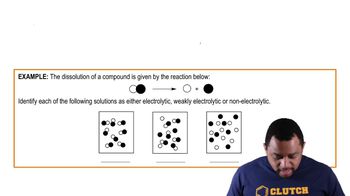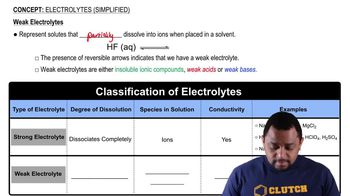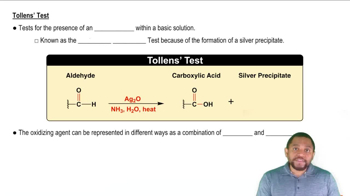Write a balanced equation for the dissociation of each of the following strong electrolytes in water:
d. Fe(NO3)3
 Verified step by step guidance
Verified step by step guidance Verified video answer for a similar problem:
Verified video answer for a similar problem:



 2:38m
2:38mMaster Electrolytes (Simplified) Concept 1 with a bite sized video explanation from Jules
Start learning